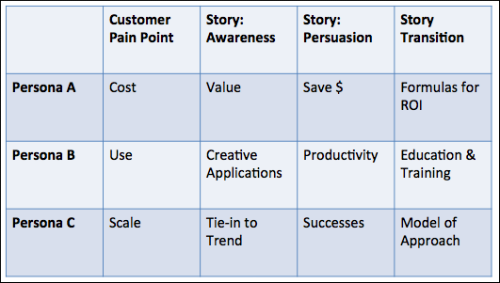
For experienced marketers it’s no surprise that understanding the motivations of buyers and what influences them can be instrumental for creating persuasive content marketing campaigns.
While that statement makes sense intellectually, old habits die hard.
Most marketers continue to focus on how digital channels like email, social networks and search work vs. how customers understand those platforms or even why they use them. Day after day, content is being created and keyword optimized by marketers with little more than intuitive insight into customer interests and preferences for content discovery, consumption or engagement.
This is a source of great disconnect and dissatisfaction when “best practices” content marketing and SEO tactics don’t produce the intended results. An increase in search and social traffic isn’t very valuable when those visitors don’t engage and the content doesn’t resonate.
I think it’s worth taking a step back from asking what keywords are most relevant and which social platforms customers are using and wonder why a certain customer uses search in the first place. Why and when during the buying cycle do they use social? When do they use search and in what context? What influences them to use both and in what situations? What kinds of content are most persuasive in different channels?
Figure out the motivations of the buyer and then add the keyword insight and I think the optimized content being created may be more effective – more persuasive at inspiring readers to take action.
How do you go about discovering opportunities for customer influence and applying them in your content marketing to be more persuasive and effective?
One of the first steps is to profile those potential customers in terms of preferences and behaviors.
- What do they currently believe to be true?
- What are their objections to doing what you’ll be persuading them to do?
- What / who are their primary influences?
- What motivates their behaviors?
- What outcomes are most attractive to them?
- What would limit implementation, use and acceptance of your persuasion objective?
It takes research, both primary and secondary to get qualitative answers to these types of questions. From interviewing sales and customer service staff to digging in to web analytics and 3rd party research – there’s a lot to draw from for capturing customer insights.
Find stories that represent examples of customer that have made the transition from previous behaviors to the desired behaviors and outcomes. “I used to think this, then I found out that, and that’s why I use/buy from company 123.”
Whether the goal is to change from one product/service to another or to shift thinking about a brand, those stories that are tailored specifically for the personas for each major segment of the target audience can provide the information and inspiration needed to make fundamental changes in their awareness, perception, acceptance and transition to the brand’s desired outcome.

The narrative for each storyline should empathize with the current situation and provide reasonable and practical steps for overcoming objections as well as clear steps for making changes. Motivations for change can vary by persona, so it’s important to identify a structure that allows for such variances. The success stories have to be real of course and not appear so different that outcomes are not attainable.
The format for content in such a situation can vary: text, digital, video, audio, images, events, email and so on – according to what is known about the target customer group. A hub and spoke model works well where the central message and content sits in the hub and promotional content in diverse formats are used in promotional channels (the spokes).
Additional considerations include how content will move customers through attraction to conclusion.
- Discovery
- Engagement
- Comprehension
- Internalization
- Enhancement
- Engagement
- Conclusion
- Sharing
Make success stories part of the bigger story for influential content. As success stories of transitioning from the old ideas to the new are told, it’s important to find and promote early successes as well as create a process for engaging with prospects, conversion and implementation.
Success stories can be small, tactical examples or more strategic and comprehensive. The role of search in such a scenario is to optimize for discovery but also to analyze search data, interactions and conversions for continued efforts at message refinement. The same attention to social analytics would also apply. In the end, those success stories can become the spokespeople for future growth, engagement and conversion.
Make change easier with relevant, persuasive content. There’s a lot of opportunity to bring in customer insight and brand storytelling into content marketing optimization and communications. Digging into the “why” for customers and understanding their motivations and influences will help content marketers better understand how to become more persuasive in a way that creates better customer experiences and sells more product.
Photo: Shutterstock


